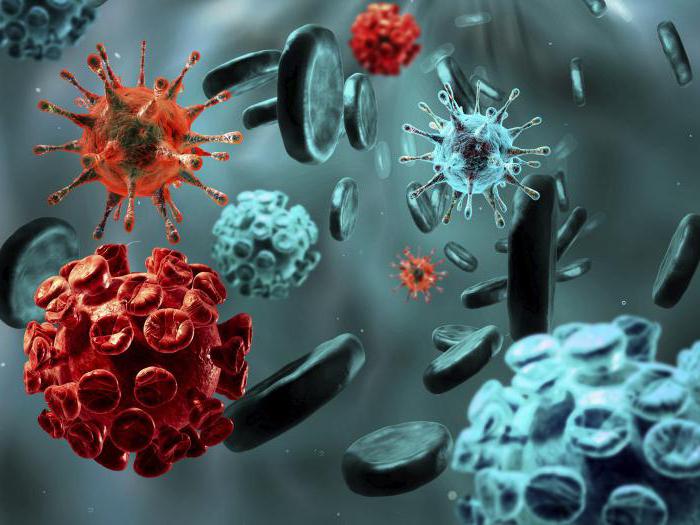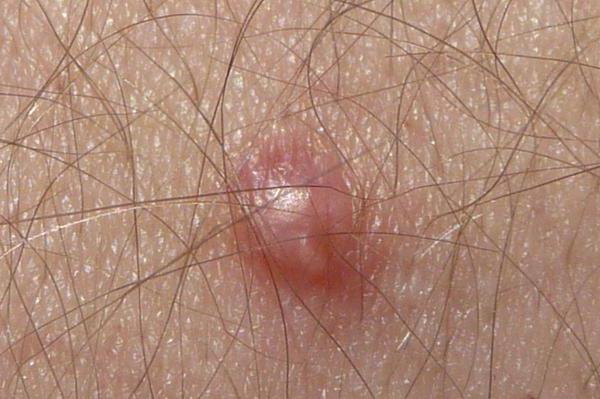What is HPV in gynecology in women, and how is this disease manifested? This question is of interest to so many patients, since such a disease can be very dangerous to health. Papillomavirus is considered one of the most common viruses, and it has many strains. Viruses of this type provoke the formation of papillomas - special formations located on the surface of the skin and mucous membranes.
It is very important to know what HPV is in gynecology in women, and how exactly this disease can be recognized, since there is a high risk of developing cancer processes. It is the high probability of degeneration into a malignant tumor of some strains that poses a serious danger to women.
What is HPV?
Many patients have a question what is HPV in gynecology. In women, this disease is common enough and affects the genitourinary system. Thanks to the use of modern research methods, it is possible to timely identify many subspecies of human papillomavirus.

The danger of this disease lies in the fact that after about 10-15 years, malignancy of papillomas occurs. Sometimes papillomas are observed in a woman throughout life and do not cause any problems, except aesthetic ones. Relapses may occur several months or years after successful treatment.
When the virus enters the body of a woman, he remains there for life. Whether relapse occurs or not, it depends on the immune system.
The main types of HPV
HPV is quite common in gynecology, and a photo of the main manifestations of the disease allows you to determine the peculiarity of its course. There are several types of this disease, which have their own specific characteristics.
Type 16 virus provokes tissue deformation and their abnormal development. In addition, the disease leads to the formation of malignant tumors and papulosis, which manifests itself in the form of spots or plaques of a pale or dark red color. Skin manifestations are accompanied by severe itching and pain.
Type 18 virus has the greatest tendency to form malignant tumors. The disease adversely affects various organs and can provoke tissue deformation.
Type 33 virus is characterized by the formation of many flat warts in the genital area. Their malignant degeneration is not excluded.
Type 35 virus appears as genital dysplasia and can trigger cervical cancer.
Type 59 virus makes itself felt in the form of condylomas in the tissues of the rectum. In the absence of the required treatment, these neoplasms can develop into a malignant tumor.
Type 68 virus manifests itself in the form of red rashes that provoke severe itching and burning. With intimacy, a woman can experience severe pain. There is a chance of degeneration into a malignant tumor.
How can I get infected
What is HPV in gynecology and how exactly does this virus manifest itself, a doctor can say for sure. Papillomas on the external genitalia do not appear immediately after infection. It has been proven that infection occurs not only through direct contact of the genitals. You can get infected in such cases as:
- oral contact;
- infection during childbirth;
- use of common household items.
Both women and men can be carriers of the virus. Infection occurs after sexual contact, and at the same time papillomas in the inguinal region may be absent. Infection of the baby during childbirth can occur if the mother is infected, and there are characteristic rashes on the mucous membranes of the genital tract.

If you use common household items with an infected person, then there is also a high risk of infection.
Provocative factors
What is HPV in gynecology, and what provoking factors exist, absolutely every woman should know to prevent the likelihood of infection. Among the main points to be highlighted are:
- early onset of sexual activity;
- promiscuous intimate relationships;
- frequent pregnancies and abortions;
- prolonged use of oral contraceptives;
- frequent sexually transmitted diseases ;
- alcohol abuse and smoking.
The disease often develops in people who prefer unprotected sex and do not care about their health. The female body most often suffers from papillomavirus due to instability of the hormonal background, exposure to stress, as well as reduced immunity (including during pregnancy).
The main symptoms
According to the clinical course, several types of HPV infection are distinguished in gynecology. Symptoms of HPV in women are largely dependent on the type of disease. In particular, one can distinguish such forms of the disease as:
- hidden;
- worn out;
- explicit.
A hidden variant of the course of the disease is characterized by the fact that the woman has no signs of the disease, and the doctor cannot detect changes through the behavior of a routine examination. In this case, to detect the virus, you need to conduct a blood test to detect the DNA of the pathogen.

For the erased variant of the course, it is characteristic that papillomas are absent, however, the causative agent of the disease can be identified by conducting diagnostic tests with staining of the cervix. Symptoms of the disease may be absent or expressed as minor discomfort.
With an explicit variant of the course of the disease, the patient herself turns to the doctor, since she develops skin growths and other symptoms of pathology are observed.
Depending on the pathogen strain, these types of neoplasms are distinguished:
- condylomas are flat;
- spiky;
- inverted;
- warts and papillomas that form not on the genitals, but in another part of the body.
Among the main symptoms of HPV in women in gynecology, papillomas on the genitals are most often found . They represent an overgrowth of the upper layers of the skin with blood supply from adjacent vessels. Skin growths are no different in color from healthy surrounding tissues. The number of such growths can be different.
Initially, the signs of HPV in women in gynecology do not appear, but with intensive growth, large sizes of neoplasms or their location at the point of contact with clothing, papillomas can be injured, hurt and bleed. In addition, trauma to papillomas can occur during sexual intercourse.
Damage often leads to infection. With the active growth of neoplasms, the symptoms of HPV in gynecology can manifest as severe itching and burning sensation.
Papillomas located in the inguinal region, subject to constant friction of linen, can degenerate into malignant tumors. In addition, tumors on the cervix can become malignant. It is worth remembering that the sooner a disease is detected, the more chances there are to prevent the oncological process. That is why it is important to apply in the presence of such signs of HPV in gynecology:
- pain and discomfort during sexual intercourse;
- spotting after intercourse;
- the presence of atypical vaginal discharge.
One of the symptoms of the disease is an increase in the lymph nodes in the inguinal region.
Diagnostics
Knowing what HPV is in gynecology in women, each woman understands how serious this disease is and how important it is to conduct treatment on time. To do this, you need to make the correct diagnosis. An important step in the diagnosis is laboratory research, designed not only to detect the virus, but also to determine its type.

What is an HPV test in gynecology, and what kind of results does it show? These questions are asked by many women who have symptoms of the disease. One of the most common diagnostic methods is the PCR method, which is used to detect many different diseases. This qualitative test allows you to determine the causative agent of the disease through their DNA or RNA present in human tissues. The highest performance is achieved when analyzing vaginal discharge. The test is completely safe and does not cause any discomfort.
An HPV DNA test is performed to determine the oncogenic types of the virus . All these types of diagnostic tests are carried out for patients if there are certain indications, as well as in the presence of diseases and symptoms such as:
- dysplasia;
- erosion;
- warts;
- metaplasia;
- cancer;
- genital warts.
It will help to find out exactly how warts with HPV look in gynecology, photo. In women, these neoplasms differ in their shape and size, it all depends on the type of pathogen that provoked the disease.
Drug treatment
Many women are interested in what HPV means in gynecology, and how the disease is treated. There are many different ways to treat papillomas, however, none of the methods makes it possible to completely get rid of the disease.
For the treatment of HPV in gynecology, medications that destroy the cells of the virus are used. At the same time, they strengthen immunity. The composition of the complex therapy necessarily includes candles "Viferon" or "Genferon", which help stop the development of the infectious process and relieve the external manifestations of the disease.

The drug "Isoprinosine" is intended for treatment and comprehensive prevention. Pills help activate the body's defenses. To cure the disease in a short time, prescribe immunity enhancers.
If the disease is oncogenic, then the drug Allokin-alpha is prescribed. This medication is used as an intravenous injection. Active components are mixed with blood and eliminate the causative agent of the disease. The drug "Groprinosin" is widely used to combat HPV and helps to eliminate the external manifestations of the disease in intimate places.
Removal of papillomas
Sometimes a more radical treatment for HPV in women is required. In gynecology, it is possible to use several different methods for removing papillomas, which is determined after colposcopy. If, according to the results of the examination, altered cells were not identified, then the papilloma itself and a small area of surrounding tissues are removed. In the presence of dysplasia, a significant area of healthy tissues surrounding the neoplasm is removed.
To remove papillomas, the following methods are used:
- laser removal;
- cryotherapy;
- electrocoagulation;
- radio wave removal;
- chemical destruction;
- argon plasma ablation.
After removal of the neoplasm, the patient is prescribed additional therapy with immunomodulators and special applications with antiviral drugs. For the successful completion of therapy, it is necessary to follow all the recommendations of the attending doctor.
One of the most innovative methods of conducting an operation is considered to be a radio knife. This method avoids thermal burns to the skin and gives a good result when removing the condyloma on the leg.
A common method of electrocoagulation, in which it is possible to completely destroy damaged tissue. However, it is worth noting that after electrocoagulation, small scars may remain on the skin. Thermal damage to surrounding healthy tissues is negligible, so they remain virtually untouched. After removal of the papilloma, slight skin pigmentation may be observed in its place.
HPV and pregnancy
During pregnancy, a woman affected by the papilloma virus often encounters the clinical manifestations of this disease, which is characterized by the formation of condylomas, reaching significant sizes. Often, condylomas pass independently after the birth of a child.

When planning pregnancy, it is necessary to undergo an examination for the presence of HPV in the body of both partners. If during pregnancy a change in the cervical epithelium was diagnosed, the doctor prescribes a course of therapy by using anti-inflammatory and antiviral drugs, and then conducts an examination again. Treatment of HPV before pregnancy is carried out if the course of this disease has pronounced symptoms. The latent form of the disease is not considered a serious contraindication for pregnancy.
Treatment should be carried out in the first trimester, since at a later date an intensive growth of neoplasms is possible, which can provoke serious complications during childbearing and childbirth. Infection of the child during passage through the birth canal is dangerous for the development of laryngeal papillomatosis. This viral disease is characterized by the formation of benign tumors in the larynx or trachea.
Removal of papillomas during pregnancy is carried out using radio wave surgery. After removal, vaginal sanitation is performed with special antiseptics.
Prophylaxis
The main preventive measure is vaccination against the papilloma virus. Vaccinations such as Cervarix and Gardasil will help protect against oncogenic strains. Regarding vaccination, you can consult a gynecologist.
In addition, it is very important to visit a doctor regularly. Significantly helps to reduce the risk of infection, protected sexual contact and the presence of one permanent sexual partner. Be sure to use your own personal hygiene products, and also avoid visiting public places, such as baths and saunas.

To prevent the possibility of infection, it is necessary to strengthen the immune system, as well as timely treatment of infectious diseases.
HPV Danger
The main danger of the virus is that over time, papillomas can become malignant. That is why it is absolutely necessary to determine the type of virus, and also to conduct treatment in time to prevent complications.
If HPV is detected during pregnancy, there is a risk to the health of the baby. The greatest risk of infection occurs during its passage through the birth canal. In certain cases, this disease shows a cesarean section.
HPV infection can trigger cervical cancer. The insidiousness of this disease lies in the fact that for a long time it has been completely asymptomatic. This leads to the fact that a woman loses the ability to conceive and have a baby. Left untreated, cervical cancer can be fatal.